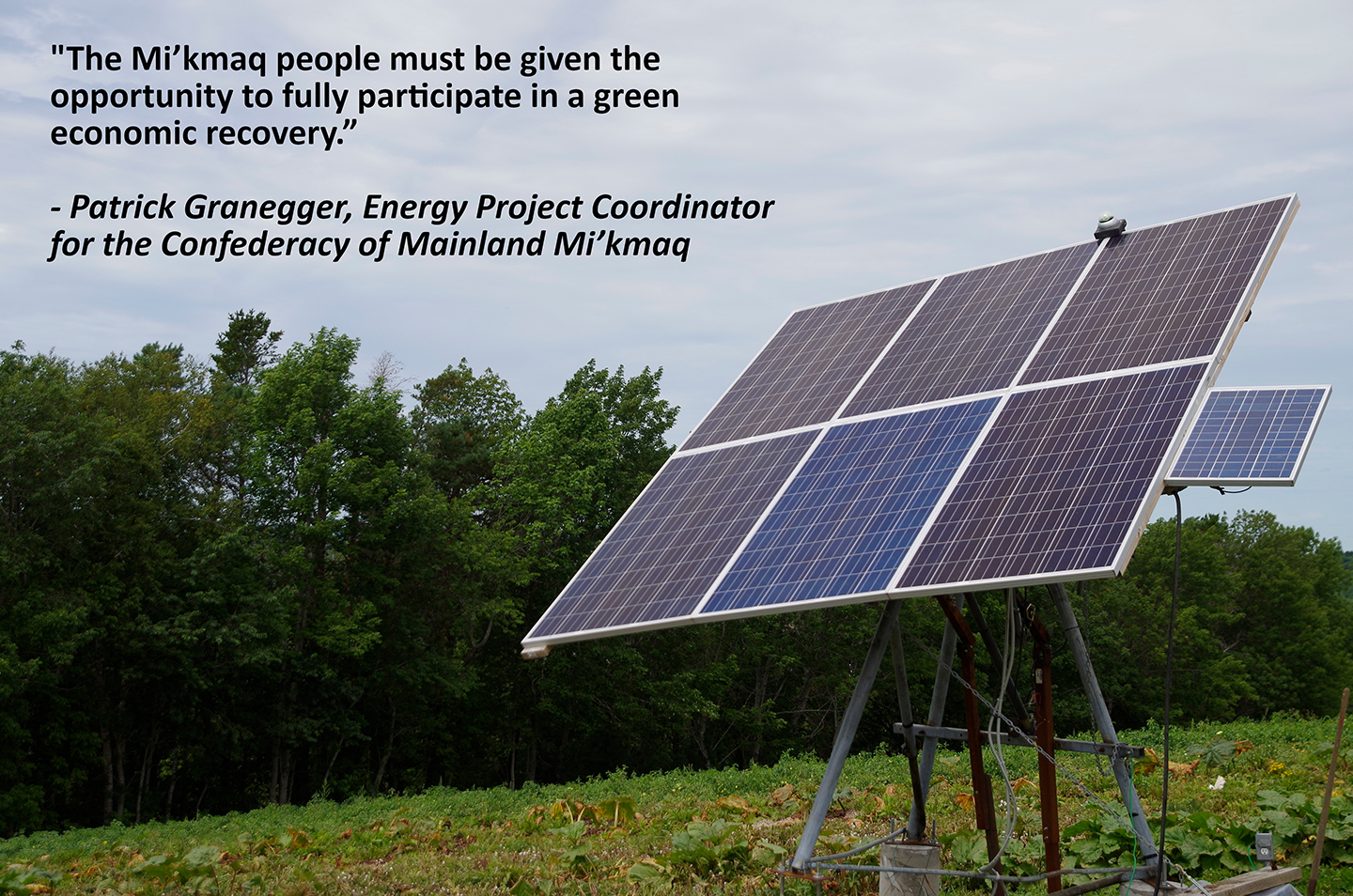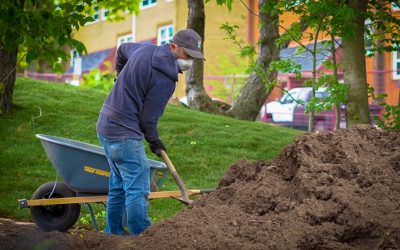
By Patrick Granegger, Confederacy of Mainland Mi’kmaq, and Rob Harris, Clean Foundation
As we look to jump-start an economic recovery in the midst of the COVID-19 crisis, we have an opportunity to create much-needed jobs in Nova Scotia and help meet our greenhouse gas targets. Reducing our dependence on fossil fuels through cleaner energy will also help secure our energy future.
The solar industry in Nova Scotia has grown significantly over the past decade, fueled by growing support from the provincial government, utilities, private sector companies, and individual consumers.
Public interest in both the environmental and financial benefits of solar has coincided with provincial initiatives such as the Solar Energy for Community Buildings program, SolarHomes rebates, Halifax’s SolarCity and other Property Assessed Clean Energy (“PACE”) programs, public awareness resources including SolarAssist.ca, and a rapidly growing number of local businesses specializing in solar installation.
Yet despite this growing interest, solar generation in Nova Scotia makes up less than 1% of the province’s electricity production. The continued dependence on coal in the fuel mix of our grid means that electricity production is responsible for 42% of the province’s greenhouse gas emissions.
Most solar generation in Nova Scotia is currently small-scale point-of-use systems such as residential, commercial, and institutional roof-top systems. But increased interest in, and demand for, renewable energy will open new opportunities for community-based solar. A diverse array of clean energy production and distribution options can also be of great interest to communities that are traditionally based on collective models of ownership, such as First Nations communities.
“There are still some clear gaps in who has access to opportunities and benefits in the green economy,” says Rob Harris, Senior Manager of Energy at Clean Foundation. “The only way we can respond to the specific needs and ambitions of First Nations communities is to increase the number of Mi’kmaq voices in our sector.”
With more than 300 active renewable energy projects in nearly 200 First Nations across Canada, the popularity of Indigenous renewable energy projects is growing. Recent projects mirror this momentum within Mi’kmaq communities. From 2017 to 2019, a total of 16 small-scale solar energy projects were awarded across 12 First Nations through Nova Scotia’s Solar Energy for Community Buildings program.
Apart from helping to green our grid and positively contribute to our commitments under the Pan-Canadian Framework and Paris Climate Agreement, First Nations solar also presents a host of direct benefits for local Indigenous communities, not the least of which is employment.
There are short-term jobs including:
- Project manager
- Solar estimator
- Surveyor
- Civil engineer
- Indigenous herbalist
- Forester
- Heavy Equipment operatior
- Electrician
- Solar Panel installer
- Carpenter and other labourers
And there are also long-term jobs including:
- Community Liaison
- Facility manager
- Maintenance
- Energy educator
- Arborist
Renewable energy partnerships between Provincial, Federal and local Mi’kmaq governments should focus on forging constructive relationships based on open dialogue and trust. Establishing tangible steps to advance education and training for Mi’kmaq communities in project planning, skilled trades, evaluation, and project oversight will be critical to the successful development of any future large-scale community solar projects within First Nations communities.
Ensuring Mi’kmaq leaders maintain decision-making in the planning and development of any future initiatives, and that regulatory frameworks are established to ensure economic benefits of projects are realized within local communities, is key to advancing Mi’kmaw energy independence and self-determination in the spirit of reconciliation.
Successful renewable energy projects in Nova Scotia/Mi’kma’ki will depend on:
- Collaborative relationships based on mutual respect between individual communities, utilities, financial institutions, private sector companies, and all levels of government.
- Financial benefits remaining in First Nation communities, and Indigenous peoples having equitable access to jobs, training, and education.
- Building renewable energy generation alongside broader goals for community growth and sustainability.
- Working within the specific political, cultural and economic contexts of First Nations communities.
- Revisiting current regulatory barriers that place disproportionate restrictions on First Nations communities because of communal models of ownership.
- Investigating opportunities for solar projects at both a community level, as well as in the context of shared energy production across Mi’kma’ki.
- Developing a training program and skill-sharing network across all across Mi’kma’ki.
- Energy efficiency education and community engagement initiatives.
“The Mi’kmaq people must be given the opportunity to fully participate in a green economic recovery,” says Patrick Granegger, Energy Project Coordinator for the Confederacy of Mainland Mi’kmaq (CMM). “Added support from the provincial government, utilities, private sector, and individual consumers has led to steady growth of the solar industry in Nova Scotia, and it’s important that Mi’kmaq communities continue to benefit from an increase in green economic activity.”
“We have to ensure there is a robust Mi’kmaw voice that does not just serve Mi’kmaq communities but directly benefits them.”
That’s why the CMM wants to facilitate the training of community members in solar installation and design. Mi’kmaq people trained and certified in solar panel installation will benefit communities as there will be less reliance on out-of-community organizations and companies for installation and maintenance on solar systems. To reach the potential of growing involvement in the green economy by Mi’kmaq people, a mandate that solar projects on Mi’kmaw land, or solar projects that directly benefit communities, includes workers from those communities should be introduced.
With Mi’kmaq people growing their experience and expertise in the solar industry, community-led solar projects can be a positive example to other First Nations across Canada wanting to work in the growing green economy. And recent funding announcements for clean energy and infrastructure projects show that there is continued interest in growing the green economy in Nova Scotia.
Seizing this opportunity would be deeply beneficial for Mi’kmaq communities — and for all us in Mi’kma’ki.


